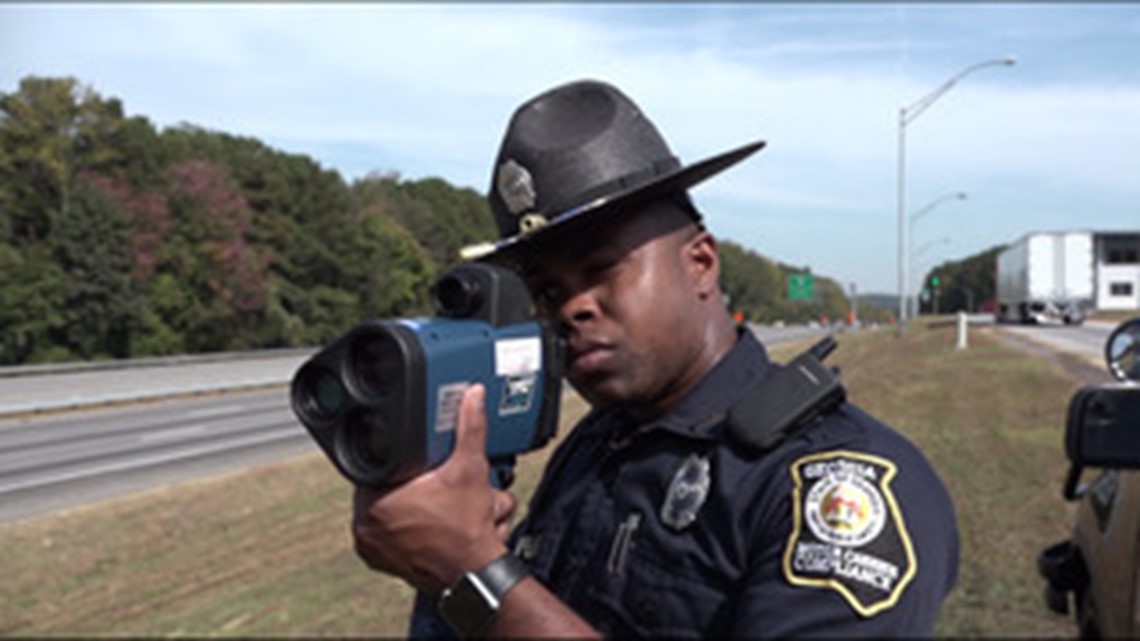Georgia set once again to hit new record for roadway fatalities
<p>Last year was a deadly year on Georgia’s roads – the worst ever - and the state says we’re on pace to set another record this year. </p>

Last year was a deadly year on Georgia’s roads – the worst ever - and the state says we’re on pace to set another record this year.
As the traffic backs up and your commute to work drags on, it’s easy to think your road is the worst road. But with 1,431 lives lost last year in traffic accidents throughout Georgia, just about every major road and freeway in Georgia makes the list.
This year, GDOT says 1262 people have already died. That's 63 more people than this time last year.
“There are now more people back to work after the great recession which is an excellent thing. But the traffic is heavier,” said Barry Schrenk, president of Taggart’s Driving School.
RELATED | Deadly route: 166 miles of danger
According to GDOT, that heavy traffic on Interstate 75 led to 61 fatal crashes last year. Ten of those accidents involved tractor trailers, more than any other freeway in metro Atlanta. But the interstate stretches more than 300 miles so despite the death toll it is not considered the deadliest road in the state.
“A lot of studies say I-285 is the most dangerous in the country,” Natalie Dale, GDOT spokesperson, said.
I-285 is a 64-mile loop packed with cars. With 20 fatalities last year, that’s a life lost for every three miles of pavement. It’s nearly double the death rate of I-75, but GDOT is still hesitant to dub it as the most dangerous.
“If you have a road where there are 10 fatalities and 100 cars a day, that’s really high. That’s something that really needs to be looked at. But if you’re looking at a road that has 10 fatalities and 10,000 cars a day, it’s the same number of fatalities but you’re dealing with a lot more traffic,” Dale explained.
DEADLIEST DAYS IN 2015:
Sunday, Feb. 22 – 11 died
Wednesday, April 1 – 10 died
Sunday, June 21 – 12 died
Saturday, Sept. 26 – 12 died
Friday, Oct. 30 – 10 died
Saturday, Oct. 31 – 10 died
Saturday, Dec. 19 – 11 died
GDOT say what matters more than where people are dying, is why. Some drivers are quick to blame tractor trailers, but last year only 10 percent of the fatalities involved big rigs.
“They’ll pull right in front of a tractor trailer who is slowing down and maybe very quickly because all the cars in front of him are stopped and maybe that space in front of him, 30 feet, is filled with a car,” Schrenk said.


That’s one reason Steve Owings is fighting to mandate the use of speed governors on big rigs. His son was killed by the driver of a tractor trailer that failed to stop when traffic slowed down.
For more than a decade, his organization Road Safe America, has fought for legislative and industry changes to make trucks safer. At the request of his organization and the American Trucking Association, the USDOT is debating whether to require new trucks to use speed limiters.
But Owings believes the USDOT should require them to be used by every vehicle, especially considering the DOT’s own report says the technology needed has been “installed in most-heavy trucks since 1999.”
“Really if there’s any villain in this it’s the government. They’re supposed to keep us safe. That’s a primary reason for government and it’s absurd that they haven’t done this decades ago,” Owings said.
The US DOT said, limiting a trucks speed to 60 mph could save nearly 500 people a year. Owings wonders how many more lives would be affected if the change was made on every big rig.


“It’s not going to happen now unless there’s an overwhelming public demand for it.”
But according to 11Alive’s analysis of the data, 55 percent of the fatal crashes were single-car accidents.
“The accidents and fatalities we see on our roadways correlate with distracted driving,” Dale said.
Schrenk has the repair bills to prove it. He purchased 10 new cars, outfitted with expensive specialty equipment for his driving school.
“We have had three major accidents in six weeks with those cars. None of them are our fault and two of the cars were totaled.”
Schrenk doesn’t understand how anyone paying attention, could rear end a car waiting to turn left, that has five red brake lights on it.
“’The policeman said what happened?’ And the driver said, ‘I just looked down for a second and there they were.’ That’s impossible.”
The state has also seen an increase in the number of pedestrians being hit by cars. In 2014, 168 people died after being hit by a car. In 2015, the number jumped to 206. And so far in 2016, 188 pedestrians have been killed by motorists. As a result, GDOT launched a See & Be Seen campaign to encourage pedestrians to make sure they are visible to cars and to encourage drivers to slow down.
You can’t control the actions of others which means regardless of what road you get on you need to leave yourself room on all sides to react, Schrenk said.
At the risk of sounding like a nagging mom, Dale adds another piece of advice. Put the phone down.
“I can get in my car today and be an alert, aware, involved driver and I have instantly changed my chances of getting home safely.”
%
